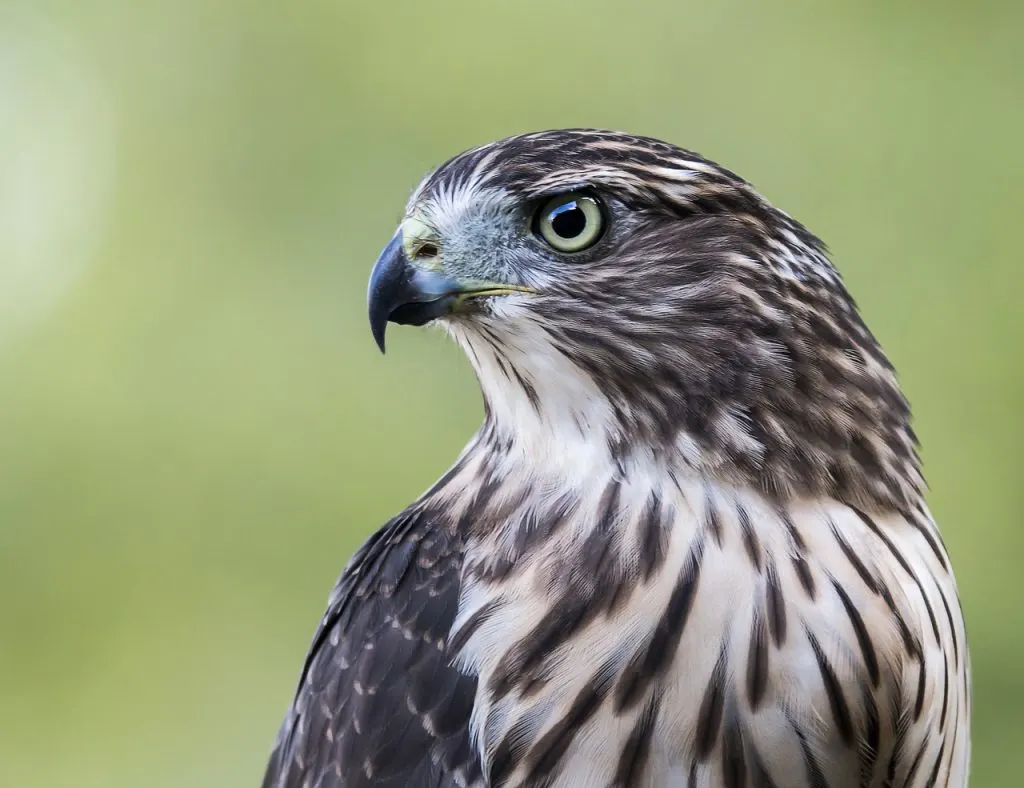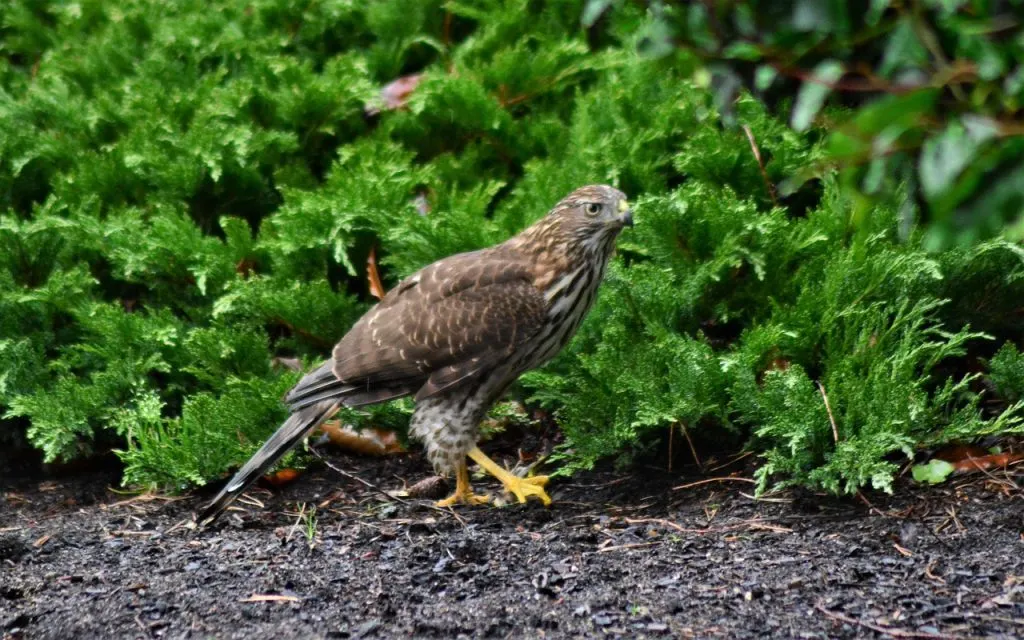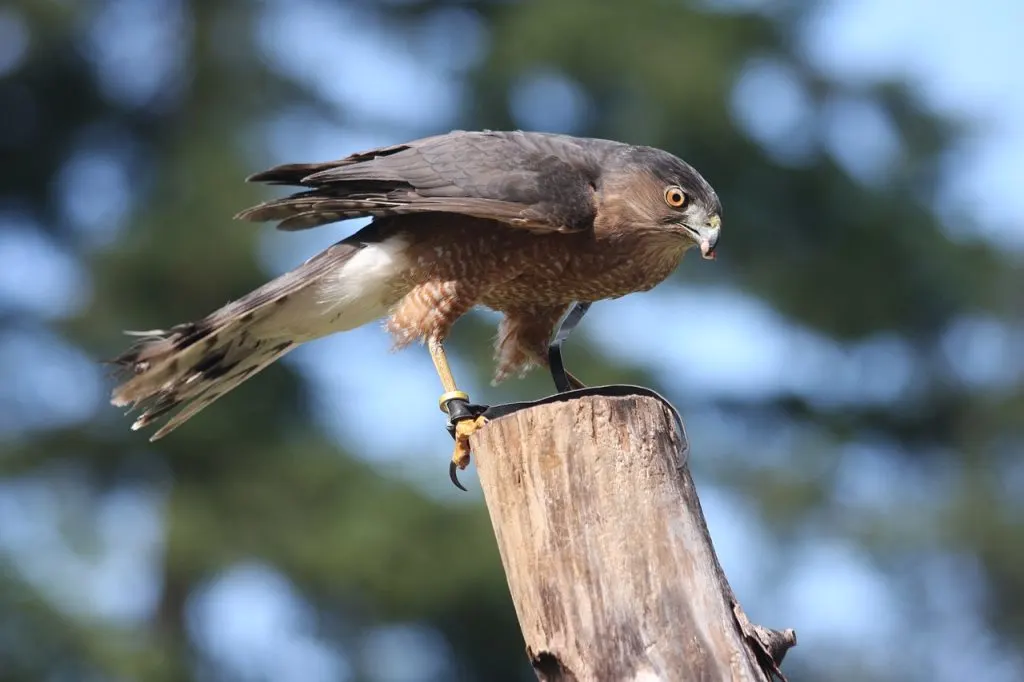The Cooper’s hawk, captivating with its sharp gaze, rapid flight, and majestic presence, is truly a mesmerizing spectacle.

As a mid-sized bird of prey native to North America, bird enthusiasts often feel fortunate to encounter this elegant raptor. Yet, while they inspire awe, their frequent visits to your yard can pose challenges.
For homeowners who maintain bird feeders to attract and nurture songbirds, the presence of a lurking Cooper’s hawk can turn this tranquil scene into a hunting ground.
Witnessing this bird of prey hunting familiar songbirds can be distressing as it seizes its prey with its keen talons and suffocates or submerges them.
The Cooper’s hawk possesses a unique method of consuming its prey, preferring to feed on them only after they have expired.
This differs from other birds of prey that may start eating their prey while it is still alive. Though this behavior may unsettle some, it’s important to recognize that nature operates according to its own rules.
Interestingly, Cooper’s hawks primarily target other birds as their prey. Contrary to expectations, smaller birds often face less risk from the Cooper’s hawk, which primarily hunts medium-sized birds.
Their preferred prey includes various species, such as European Starlings, Mourning Doves, Rock Pigeons, American Robins, different Jays, and even domestic fowl.
However, when these bird populations are scarce, the adaptable Cooper’s hawk can adjust its diet, readily raiding nests or hunting mammals like rabbits, mice, squirrels, and bats. Thus, a backyard provides an ideal habitat for the Cooper’s hawk.
They Are Extremely Territorial

With a diverse diet, bold flight, and distinct territorial behavior, the presence of these hawks can impact local wildlife populations.
Frequent predation by Cooper’s hawks may reduce the numbers of certain species, particularly those of your regular bird visitors.
However, despite the variety of wildlife species in your yard, the Cooper’s hawk’s hunting range extends beyond them.
Exercise caution if you have small pets and the Cooper’s hawk believes it can carry them. These skilled predators are open to trying different types of prey.
Yet, there are other considerations. While impressive in their natural habitat, the Cooper’s hawk’s exceptional agility and confidence in flight can pose risks in urban environments.
During high-speed pursuits, they may mistake window reflections of trees or the sky for open paths.
Such misjudgments can result in window collisions, endangering the hawk and potentially damaging property.
Additionally, nesting season adds another layer to our interactions with Cooper’s hawks. As they defend their nests, these raptors can become highly territorial.
Their heightened defensiveness may lead them to perceive humans or even larger pets as potential threats, sometimes displaying aggressive behaviors as a result.
While this behavior is instinctual for the bird, it can create challenging and potentially dangerous situations in residential areas.
The most unpleasant aspect of having a Cooper’s hawk in your yard is often discovering the aftermath of its hunt.
Evidence such as scattered feathers or remains may attract scavengers or unsettle those with sensitive sensibilities. Fortunately, there are measures to mitigate such occurrences.
Ways to Prevent Their Behavior

The simplest and most effective approach to deter Cooper’s hawk from your yard is to remove your bird feeder for approximately a week; the predator will likely seek prey elsewhere.
To minimize window collisions, consider installing bird-friendly window treatments, such as decals that reflect ultraviolet light or external screens.
Additionally, to aid potential prey, provide dense shrubs or brush piles for smaller birds to find shelter and ensure clear escape routes from feeders to these safe havens.
Lastly, always opt for humane deterrent methods, tidy up your yard to discourage scavengers, and stay informed about local wildlife regulations.
While a mixture of wonder and caution accompanies the presence of a Cooper’s hawk in your yard, it’s essential to recognize their role in our ecosystem.
Their presence may indicate a healthy environment in your backyard, as they thrive in areas with abundant food and a robust ecosystem.
However, if concerns arise, you can deter these raptors with minor adjustments to your backyard.
Ultimately, it’s about coexisting with nature, understanding its patterns, and ensuring the flourishing of both humans and wildlife.
